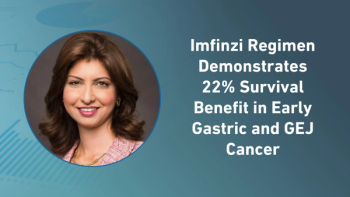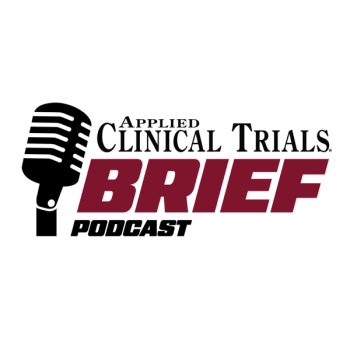
Cough Monitoring Adoption: Q&A with Tom deLaubenfels, PhD, Director of Data Science, Strados Labs
deLaubenfels addresses key challenges seen by sponsors and highlights the value cough monitoring can provide.
In respiratory clinical trials, cough frequency monitoring can serve as a valuable endpoint. Despite this, challenges remain to consistently and effectively implement it. In this Q&A with Applied Clinical Trials, Tom deLaubenfels, PhD, director of data science, Strados Labs addresses some of these challenges and digs deeper into the value cough monitoring can provide.
ACT: How common is it for sponsors to objectively monitor cough in clinical trials? For which indications?
deLaubenfels: While objective cough monitoring can offer valuable insight into treatment efficacy and response, it has not seen widespread adoption in respiratory trials quite yet. The most common way sponsors currently measure improvement in symptoms like cough and wheezing has been through patient questionnaires/electronic patient-reported outcomes (ePROs), which studies have shown can be more than 50% inaccurate compared to an objective, clinical patient assessment. Some technologies have been introduced for continuous cough monitoring, but they struggle to measure what matters most to patients, which is how their symptoms impact their quality of life. With new cough monitoring technologies, it’s possible to track lung sound symptoms such as coughs or wheezes over time, and associate them with additional metrics (activity levels, relative cough intensity, body orientation, etc.) which may be measured with the same technologies. Together, these longitudinal metrics provide greater insight into changes in patient quality of life.
For indications specifically focused on reducing cough, such as chronic cough or idiopathic pulmonary fibrosis (IPF) cough, objective cough monitoring is typically used as the primary endpoint for demonstrating treatment efficacy. We anticipate that newer technologies that make it easier for sites and subjects to monitor cough will spur its use in respiratory trials such as in chronic obstructive pulmonary disease (COPD) and asthma, where cough is a common, burdensome symptom and may be associated with disease severity.
ACT: What are some of the key challenges sponsors run into with objective cough monitoring?
deLaubenfels: One of the main challenges sponsors have run into with objective cough monitoring has been effectively demonstrating treatment efficacy. The traditional endpoint associated with cough monitoring—24-hour cough frequency—has come under scrutiny recently after the Merck
Another challenge with cough monitoring has been the cost/logistical hurdles as well as the high subject burden associated with traditional cough monitors. This has hindered its use in most clinical trials where cough isn’t a required endpoint. However, newer technologies that are both economical and patient/site-friendly make it more feasible for the broader respiratory trial community to add cough monitoring to their protocols. Additionally, these technologies make it easier to monitor coughs over longer periods of time, allowing smaller effect sizes to be resolved within the endpoint measurements.
ACT: How can monitoring lung sounds such as wheeze and crackles offer value to sponsors?
deLaubenfels: While cough is where respiratory drug developers typically start when considering wearable technologies, we are also able to measure adventitious lung sounds such as wheezes and crackles in daily life which can provide even more clinical insight into treatment response. For example, wheezing is a hallmark symptom in asthma and COPD that can reveal airway obstruction; crackles, a lung sound indicating fluid in the lungs, is especially common in IPF and congestive heart failure (CHF). While questionnaires like the Asthma Control Test typically ask about some of these lung sounds or symptoms, we are excited by the possibility for drug developers to measure them objectively alongside cough. A key value-add of these objective measurements relative to traditional patient-reporting questionnaires is the ability to directly observe symptoms before and after the application of a treatment in order to test its efficacy. Another advantage is the ability to effectively measure symptoms during sleep, as it has been
ACT: Do you see objective cough monitoring replacing self-reporting or complementing it?
deLaubenfels: We see objective cough monitoring complementing patient self-reports rather than replacing them. Ultimately, patients are the best judge of how they’re feeling, but consistently remembering symptoms in detail—when they occurred, how much exactly, and at what points they began to improve or worsen—is not only challenging for patients, but imposes a high burden. Even the most diligent of patients cannot reliably report on symptoms experienced during sleep. Additionally, some patients might perceive improvement more or less than others due to the subjective nature of the reporting. Objective cough monitoring with wearable devices can fill this gap and provide an objective ground truth with which to anchor patient self-reports; likewise, patient self-reports can offer meaningful context to quantitative data collected by wearables. To summarize, both patient self-reporting and objective data are valuable and provide the most complete information and consistent evidence when used together.
Newsletter
Stay current in clinical research with Applied Clinical Trials, providing expert insights, regulatory updates, and practical strategies for successful clinical trial design and execution.





.png)



.png)



.png)
.png)
